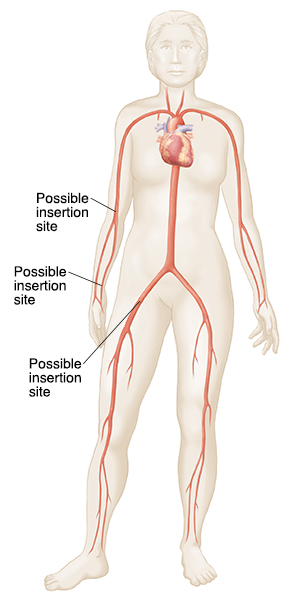Coronary Atherectomy
Coronary Atherectomy
What is coronary atherectomy?
Atherectomy is a procedure that relieves symptoms of coronary artery disease by improving blood flow to your heart. It is done using a small, thin tube (catheter) inserted into a blood vessel and guided to the blocked blood vessel. There, a device is used to grind or vaporize the plaque buildup to improve blood flow. It may be used instead of coronary angioplasty.
What happens during an atherectomy?
The skin at the insertion site (usually the groin) is numbed with a local anesthetic. A needle puncture is made so the catheter can be inserted.
A guide wire is inserted through the guiding catheter and moved to the narrow spot in your artery. Your doctor tracks its movement on an angiogram, a special kind of X-ray.
Then, a catheter with a grinding device at the tip is positioned at the narrow spot in your coronary artery.
An abrasive burr at the tip of the catheter grinds the plaque into small particles that float harmlessly away in the bloodstream.
What happens after an atherectomy?
You will need to lie down and keep the insertion site still for a period of time.
If the insertion site was in your groin, you may need to lie down with your leg still for several hours.
A nurse will check the insertion site and your blood pressure. Before going home, you may have a chest X-ray and other tests.
You usually stay in the hospital for several hours or overnight.
When to call the healthcare provider
Contact your healthcare provider if any of these occur:
You have angina (chest pain)
The insertion site has pain, swelling, redness, bleeding, or drainage
You have severe pain, coldness, or a bluish color in the leg or arm that held the catheter
You have blood in your urine, black or tarry stools, or any other kind of bleeding
You have a fever of 100.4°F (38.0°C) or higher
Updated:
August 07, 2018
Sources:
Clinical manifestations and evaluation of adults with suspected native valve endocarditis, Up To Date, Directional Coronary Atherectomy, Williams, DO., (1998); 97:309-311
Reviewed By:
Fraser, Marianne, MSN, RN,Gandelman, Glenn, MD, MPH,Image reviewed by StayWell medical illustration team.
